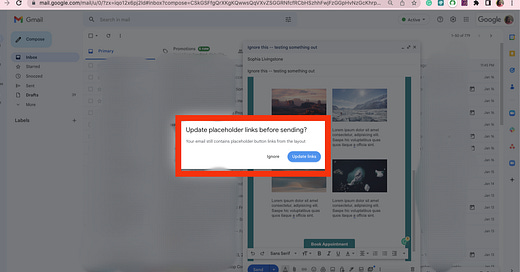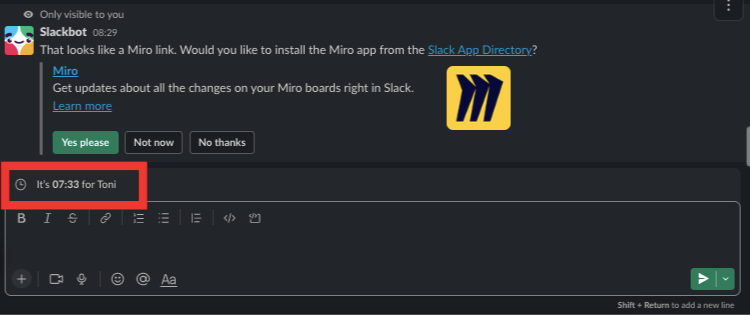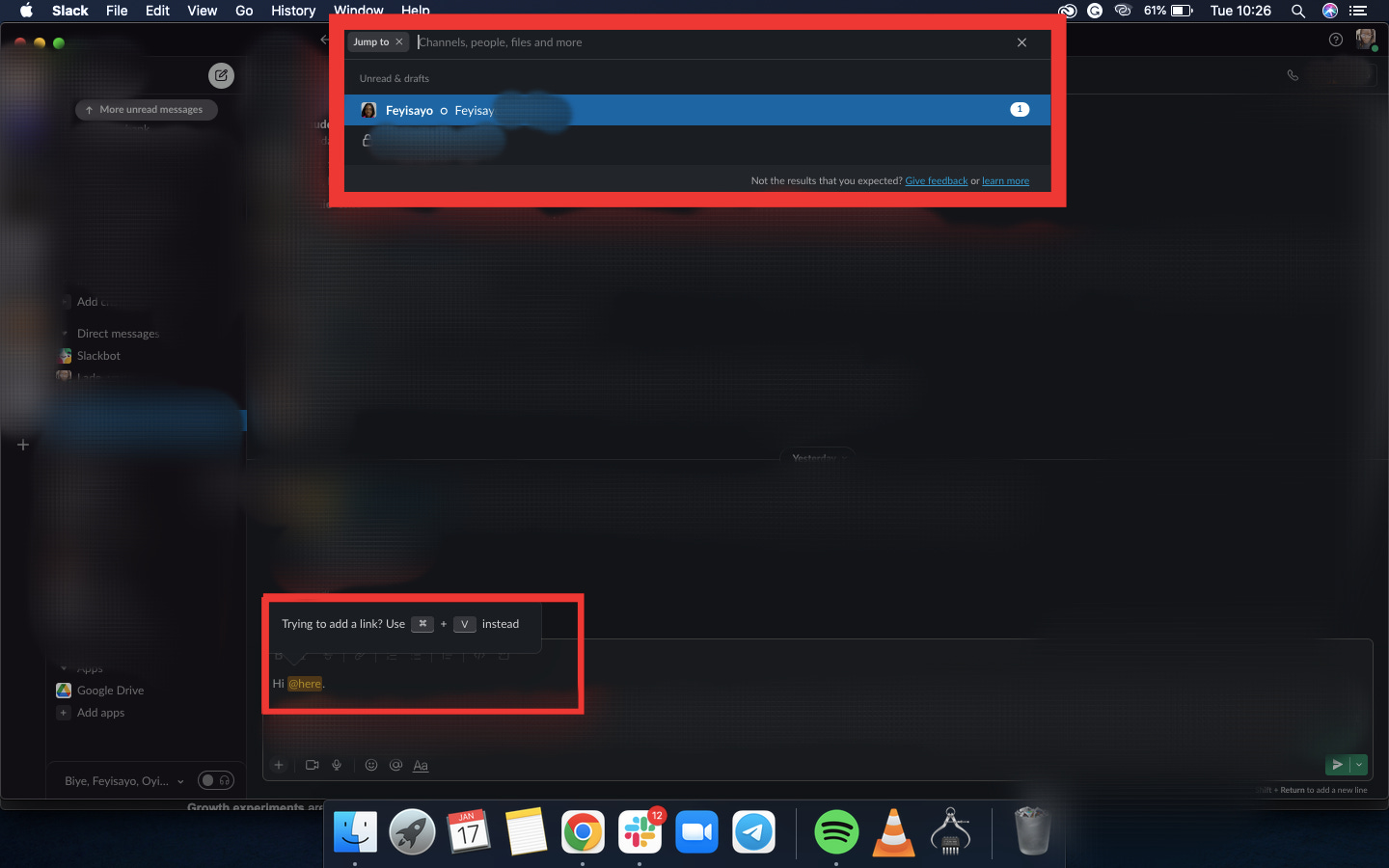MFG #07: Product-Led Growth, Viral Content, Delighting Customers & More.
Driving product-led growth, using influencers to boost viral content, and how to delight your customers by over-delivering.
Hi there.
Welcome to the 25 new subscribers that joined Marketing For Geeks since the last issue. Every other week, I share 1 interesting thing from my week, 3 actionable marketing insights that have helped me become a better product marketer, and 5 pieces of marketing that caught my eye.
This week, I’m excited to include MFG’s first guest post, with an insight from one of my favourite marketers (and my favourite guy), Timi Elebute. We had a truly enlightening conversation and I intend to move that conversation to a podcast on Substack in the coming week.
P.S. If you’d like to be a guest contributor on MFG, check out the guest post guide.
Also, remember in the first issue of this year, I set a goal to build a community around MFG, especially for marketers who reside in Ibadan. I’ve started with a small WhatsApp group — please reply to this email with your phone number or drop a comment if you’d like to join.
Let's dive in!
🔑1 Interesting Thing
Last week, I bought some meat from my regular vendor at the market. I typically buy 1k worth of meat, usually about 5-8 pieces. Per usual, I bought 1k meat and he cut it into about 6 pieces. Even though this was within the regular range (especially given the situation of the country), I felt less satisfied than usual. It was only when I got home that I realised why.
Usually, my meat guy cuts a number of pieces — let’s say 5 pieces — and then goes through the motion of pretending to suddenly make the decision to add another piece as jara. He didn’t do it this time around (which caused my dissatisfaction), but it was one of the reasons I initially chose him as my regular vendor.
This reminded me of an insight I’d had in my notes for a month but hadn’t found the words to articulate well enough. Here it is:
The key to delighting customers is to deliver their expectations first and then throw in a “surprise” add-on. Do not bundle the add-on as part of the expectations.
Most customers already have a minimum expectation of the value they can expect from your product. For example, when I try most subscription products, I expect to get a free trial, because most subscription products offer free trials and have set my expectations. If I do not get a free trial, I am immediately disappointed. If I do get a free trial, I am satisfied, but not delighted. However, if at the end of a 7-day free trial, I get an extra 7 days to go free, then I become delighted.
Spotify uses this principle. Customers already expect to be able to get free trials when they start. However, they both do something extra to delight both new and churned users. If you’re a new user or if you cancel your subscription and try to come back after some time, you get offered 3 months’ worth of subscription for the price of one month. That particular strategy has drawn me back to Spotify twice, even though it’s not my favourite streaming platform feature-wise.
It’s a principle I also try to apply in Marketing For Geeks. New subscribers expect to get an email notifying them that their subscription has been successful and they expect regular emails after that. As my jara, I give new subscribers immediate value (access to my resource bank) so they don’t have to wait till the next issue to get value from their subscription.
The best way to follow this principle is to first understand the expectations your customers have. Start by checking out what minimum value cuts across all your competitors, then speak with real users to understand the basic requirements they have from products like yours. Once you know the expectation, it’s easy to beat it — either by building an extra offer into your product or shifting your messaging to make a regular offer sound like an add-on (e.g. instead of a 14-day free trial, call it a 7-day free trial and throw in an extra 7 days as a “surprise”).
TL;DR (Too Long, Didn’t Read): Customers have minimum expectations of value from your product. You need to meet those expectations for them to be satisfied. But if you really want loyal customers, you need to over-deliver and go above those expectations by presenting an add-on.
💭3 Insights
#1. Content cannot go viral without influencers.
This is a big claim, I know. If you’ve created content that went viral, whether as a brand or from your personal account, you might have noticed that your content only starts to gain traction when someone with a large following engages with it. Your content could tick everything on the viral marketing checklist and still not go viral because the right people haven’t reposted it. I highly recommend you read more about why (most) virality is a myth in this post by Lenny Rachitsky.
This is good news though because it means you can engineer viral content easily. It’s why some Twitter users tag major influencers in their posts; because they realise a single retweet or comment from one of the influencers will boost their engagement and followership.
For brands, this means it’s important to keep great relationships with influencers. I don’t mean that you need to keep influencers on a payroll (although it’s not the worst idea if you can afford it; it’s the whole idea behind brand ambassadors). There are other ways to systemise influencer promotions without necessarily hiring influencers:
First, you need to identify the influencers whose audience, content, and core values align with yours. This is important if you want your content (and their interaction with it) to seem organic. P.S. Influencers, in the context of this, does not necessarily refer to people who get paid for brand partnerships (career influencers). Influencers here refers to people with a large following and respectability in any niche.
You can then create the type of content that your chosen influencers are likely to naturally interact with. Only tag them to it if you can make it look natural within the context of your post and brand.
Onboard influencers into an affiliate system and reward them for referrals. If you have an existing referral system built into your product, you still need to push build a separate affiliate system for influencers (build a landing page with info about it, frame it as an exclusive community, offer them bonus rewards or share profits with them).
TL;DR: Viral content doesn’t go viral on its own; it needs at least one person with a large following to engage with it. This means you should keep a bank of relevant influencers and engage with them frequently and naturally. Engage them in paid collaborations where possible and onboard them into an affiliate system.
#2. There are three questions to ask about your brand before jumping on sensitive trends.
I watched Season 5 of The Crown a few weeks ago and there was something Queen Elizabeth’s character said that struck me. She said before she spoke on certain issues, she asked herself three questions:
Does it need saying?
Does it need saying now?
Does it need to be said by me?
I immediately thought about brands that had faced backlash by jumping on the wrong trend at the wrong time or in the wrong manner. Perhaps if brands asked these questions before making statements on current events or trends — especially ones that are highly impactful, hold real meaning, or are regarded as controversial — then maybe they wouldn’t get into so much trouble.
Brands need to be honest about their place in the big picture of major events and trends and ask themselves pertinent questions. I’ll rephrase the questions a bit to fit more into the context of brands:
What do we want to say and why do we want to say it?
Is this the best time to say this?
Are we the best people to say this and what qualifies us as the best people?
TL;DR: Some trends and happenings are sensitive and should be treated as such. You must ask yourself if what your brand wants to say is important at that particular moment and if you are the best people to say it.
#3. Conducting full product audits and monitoring data is key to PLG.
Insight from Timi Elebute, who has worn many hats and worked across customer success, growth, media buying & planning, event marketing, sales, community management, and communication. The rest of this section (Insight #3) is written from Timi’s POV. You can connect with him on LinkedIn.
Good products can sell themselves — it’s true. But there are very few good products. Here are a few steps to help you conduct product audits and monitor data to drive Product-Led Growth:
Speak with your customers: Interviews and surveys with real customers will give you insight into their problems and how they use your product to solve them. You need to get feedback from customers at various points in the journey — you never know which would be insightful.
Use the product yourself: This will help you catch errors and see the same journey your customer is going through, and you might find places that need optimisation along the way. Everyone in your organisation needs to be using the product.
Speak with the product team: It’s not just your customers you need to speak to. Ask your product team about the work they’re doing and the reasoning behind it. This makes it easier for you to translate the product to customers and translate customer needs to the product team.
Look in on data often: In my work at Sendme, one thing I learnt was that you have to monitor data closely and not dismiss anything. For example, there was a time we made some changes to our prices, but didn’t see the expected spike in sales. I was working with the customer success team at the time, so I looked at the data and saw a pattern of purchase, like which days customers made most purchases, which products sold best on those days, etc. Data like that helped us focus our marketing efforts.
Here are some changes we made after looking at the data:
After looking at the number of sales per product, we began offering discounts on slow-moving products.
We saw products that were often purchased together and started pairing them together.
We noticed that most purchases happened on Friday and Saturday, but customers ignored our calls when we tried to call them on those days. So, we started making sales calls from Wednesdays instead.
TL;DR: PLG is an amazing growth lever once you hack it. But first, you need the type of product that sells itself. This means you need to understand the product, the ideal customer, and their behaviours. Find behavioural patterns from data and use that to drive decisions.
⚡5 Pieces of Marketing
Friction can be a good thing when it’s intuitive. Friction is anything in your product that acts as a barrier to your user reaching a goal. Things like pop-ups, paywalls, verification procedures, error messages, empty states, etc. are friction points in your products. When you understand how your customers use your product, it’s easy to predict what kind of friction is good or bad. Here are 5 examples of good friction.
#1. This pop-up from Grammarly👍🏽
This came up when I tried to send an email without correcting recommendations from Grammarly. Very intuitive and this is absolutely a great point for them to push that I upgrade to Grammarly Premium (which they did).
#2. This pop-up from Gmail👍🏽
Found out recently that Gmail has email templates. This came up when I tried to send an email with the template without updating the placeholder links. Very intuitive, very useful. This is friction that is useful to the user.
#3. These messages from Slack👍🏽
It’s two things here. The intuition to tell me that the person I was sending the message to was in a different time zone; and the push to install one of Slack’s many apps to get more out of the product.
#4. This message by Slack👍🏽
In most other apps, Ctrl/Command + K is the shortcut to embed a link with some text. However, in Slack, for some reason, this command launches the “Jump to” search feature. They made up for this by informing me of the right command to use if inserting a link was my intended action instead.
#5. This reminder from Gmail👍🏽
This feature has saved me so many times. Gmail prompts you to add an attachment to your email if you use the words “have attached” and forget to add an attachment.
A little about you
I’m on a quest to know more about my subscribers, so every month, I’ll have a random question here to help me know a little about you. Don’t worry, it’s completely anonymous. This month’s question:
What I’m Reading
How To Get People To Choose Your Product — Quick read on how to differentiate your product.
The Most Important Metric for Any Business — The first in a series of articles about Customer Lifetime Value.
Startups are cheaper to build, but more expensive to grow — Insightful article about why growth costs are high with a few tips to help navigate this.
The Psychology Behind TikTok’s Addictive Feed — Excellent teardown from one of my favourite websites. I highly recommend subscribing.












In a way, I think that "little surprise" can easily turn into expectations as well. For example, you've told me about Soptofy's surprise so I'd subscribe to the free trial with this expectation.
Always learning something new every single time! Thank you!